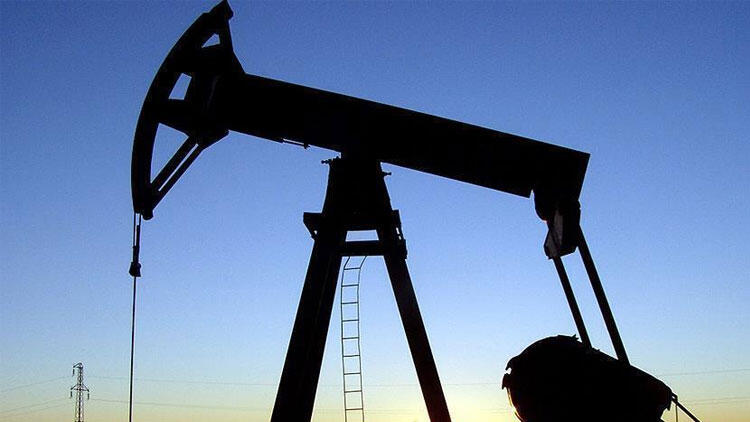
Above $60 Oil Provides Balance Sheet Relief for the Middle East
Oil recently touched above $70 and continues to hover above $60 today. The uptick is a welcome breathe of fresh air into the Middle East (financial) ecosystem. The price surge is generating more cash than expected for regional governments that heavily borrowed with a long view on recovery and economic revival.
If oil prices can hold in the $60 range for the year (or at least most of it), many Middle East governments will be able to reduce their borrowing and external financial needs. More importantly, the new cash inflow is and will continue to allow the regional states to underwrite new financing, particularly in their banking sector, and evade the 2009-esque fallout as banks today are theoretically bridge financing regional corporates to 2022 (…or potentially 2023) via debt deferrals or inexpensive new loans.
This is not 2008 / 2009
Remembering 2008-2009
The 2008 financial crash first crushed the U.S. markets before permeating the markets in Europe, Asia, and the Middle East. A mortgage crisis and credit crisis lost the markets more than 30% of their value with the biggest drop coming on September 29, 2008. The Dow Jones Industrial crashed nearly 778 points in intraday trading…ironically the biggest drop until the tumbling in 2020 caused by the covid-19 pandemic and subsequent lockdowns. The Middle East, apart from the UAE, had rather limited direct exposure to the mortgage crisis and global financial market crash.
The trickle-down effect, however, would be the cause of detriment for the Middle East. Global consumer demand would contract with global trade activity accordingly declining. Secondly, oil prices would plunge from $147 per barrel in July 2008 to around $60 per barrel by mid-2009. Lastly, international credit markets would tighten, which would squeeze the liquidity out of the system.
The Reality of 2020-2021
The 2020 market crash would be short-lived with the Dow Jones Industrial plunging to 19,173.98 on March 20, 2020 and back near 29,000 by late-summer. Yet, with 2009 as the best comparison, Middle East governments focused on liquidity by calling for corporate debt deferrals (to ease pressure on corporate balance sheets), tapping sovereign debt markets for cash, and pushing the cash into banks to ensure continuity in the financial system.
By the time it was clear that liquidity would not be the issue, the money was already in the ecosystem. As a result, many regional banks were lending to government-related entities (GREs) at pre-covid rates by the fall of 2020 simply to get the money out of their coffers. The squashing of the Saudi-Russia oil price war from early 2020 also aided the rebound with countries agreeing significant cuts to oil production which consequently helped to push the oil price back up.
Oil and an Abundance of Cash
High oil prices may become the “get out of [financial] jail free card” for many Middle Eastern governments. Or, at least, it will be a packet of “day pass[es]” that officials will be happy to use to partially unwind the expensive part of their balance sheet and gear up where possible at a cheap cost.
According to Moody’s, a $20 per barrel increase in the average oil price could boost revenues for regional governments by about 5-10% of forecasted GDPs. Oman, Qatar, and Saudi Arabia are the most likely countries to see the biggest benefit from today’s price uptick. All three countries budgeted on oil prices at $50 or less in their budget: Oman at $45, Qatar at $40, and Saudi Arabia at $50
Oman is already tapping bond markets to ensure it has cash reserves as the pandemic endures in the county (the Omani borders remain open to only Omani citizens and residents). According to the Omani Ministry of Finance, the Omani government has already raised nearly $6.2 billion, including about $1.6 billion borrowed from the Oman Investment Authority, of the estimated $10.9 billion external financing required for its budget.
In Qatar, oil accounts for more than 60% of GDP and the officials have already began discussions about issuing new bonds in the coming months. Saudi Arabia, which expects a fiscal deficit of 4.9% of GDP in 2021, depends on oil for 45% of its GDP…the kingdom with its ambitious transformation and development plans happily welcomes this financial relief from higher oil prices. The Saudi sovereign wealth fund, the Public Investment Fund (PIF), arranged a $15 billion credit facility last month with a group of international banks as it continues to play a big financial role in the kingdom’s economic plans.
The US Federal Reserve’s decision to hold rates steady this past month and signal that rates could stay low for the next three years also helps the situation as emerging markets can stay the path of recovery with less concern for rising borrowing rates. Thus, although the Fed may have a growing crowd of U.S. critics for its dovish economic stance, Middle East borrowers will likely not join the group of critics…at least for now.
Large corporates in the region also benefit from the oversupply of money in the system. Many governments have maintained debt deferrals and other support programs since lockdowns begin back in March 2020. There are numerous corporates who have not paid interest or rent since early last year. If anything, as 2020 (and now 2021) demonstrate, a mix of regulatory restrictions on debt collection and foreclosure coupled with vigorous debt and equity markets can shift the timeframe for critical financial decisions. In the eyes of some critics, today’s mechanisms are only a sexier version of “amend and extend” from the last financial crash that pushes out the day of reckoning.
The most notable outcome of cash in the ecosystem unsurprisingly is the lack of financial restructurings and liquidations amongst large corporates, especially compared to the 2009 fallout. Still, there will be day when everything must be addressed on corporate and sovereign balance sheets. So far, Oman will start implementation of a 5% value added tax (VAT) this month. Saudi Arabia increased its VAT to 15% in 2020. Decisions on those taxes were nevertheless made before oil prices recovered. Thus, per the usual, markets do not expect any drastic policy changes today as it looks like the world’s addiction for oil may again provide additional runway for the region, at least, in the short term or until the day of debt reckoning(?) comes.
